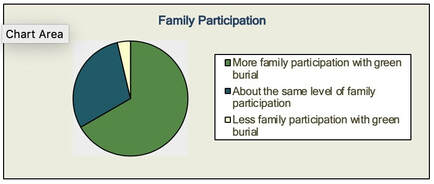GBC Publications

The Science Behind Green and Conventional Burial
The Green Burial Council is frequently asked about the science of burial, specifically the environmental or health effects of burial without a vault, conventional hardwood or metal casket, or embalming. Questions range from repercussions to benefits of natural burial for both the living and the dead, but are about the future of the planet.

Final Disposition (what happens to a body after death):
Comparison of Potential Environmental Benefits and Costs
What matters most to you? Environmental impact? Religious, family or cultural tradition?
Ceremony with the body and/or memorialization or ceremony with the remains? Working with
a locally owned and operated facility? Relationship with established conservation stewards?
Cost?

Human Composting and Conservation Burial: Comparing Carbon Costs and Benefits
Let’s start with the basic question we should be asking: What is the real carbon footprint of central-facility
body-composting and how does it compare to conservation burial?
Green Cemetery Survey Results
In January of 2015, the Education Committee of the Green Burial Council solicited responses from seventy green burial cemeteries in and out of the GBC network, receiving a 53% response rate. The data collected was used to develop presentations for the ICCFA conference in San Antonio, Texas, to cemeterians and funeral industry professionals. The data collected has been valuable in helping to inform the GBC and support its mission to educate the public about green burial and develop ways to support certified providers.











